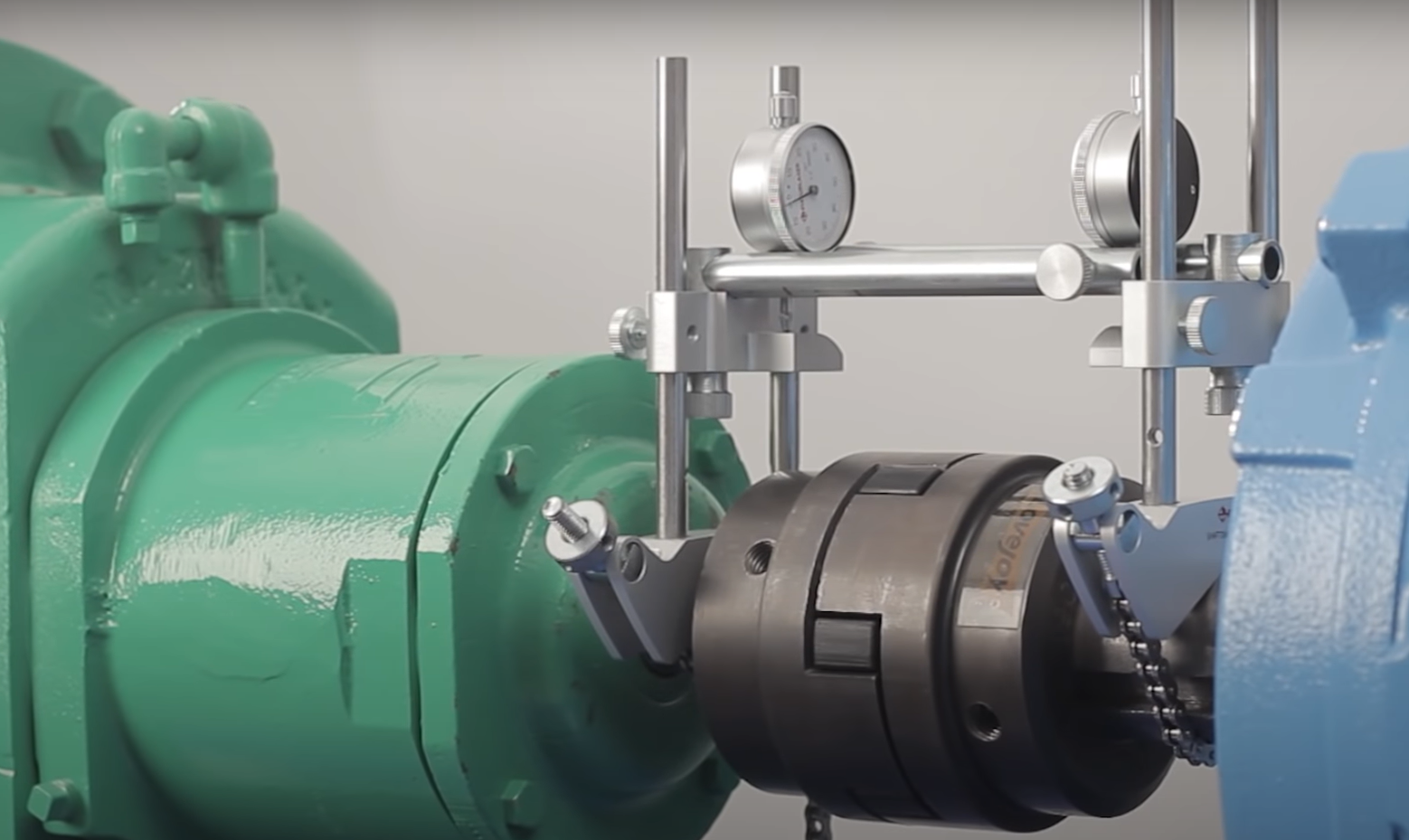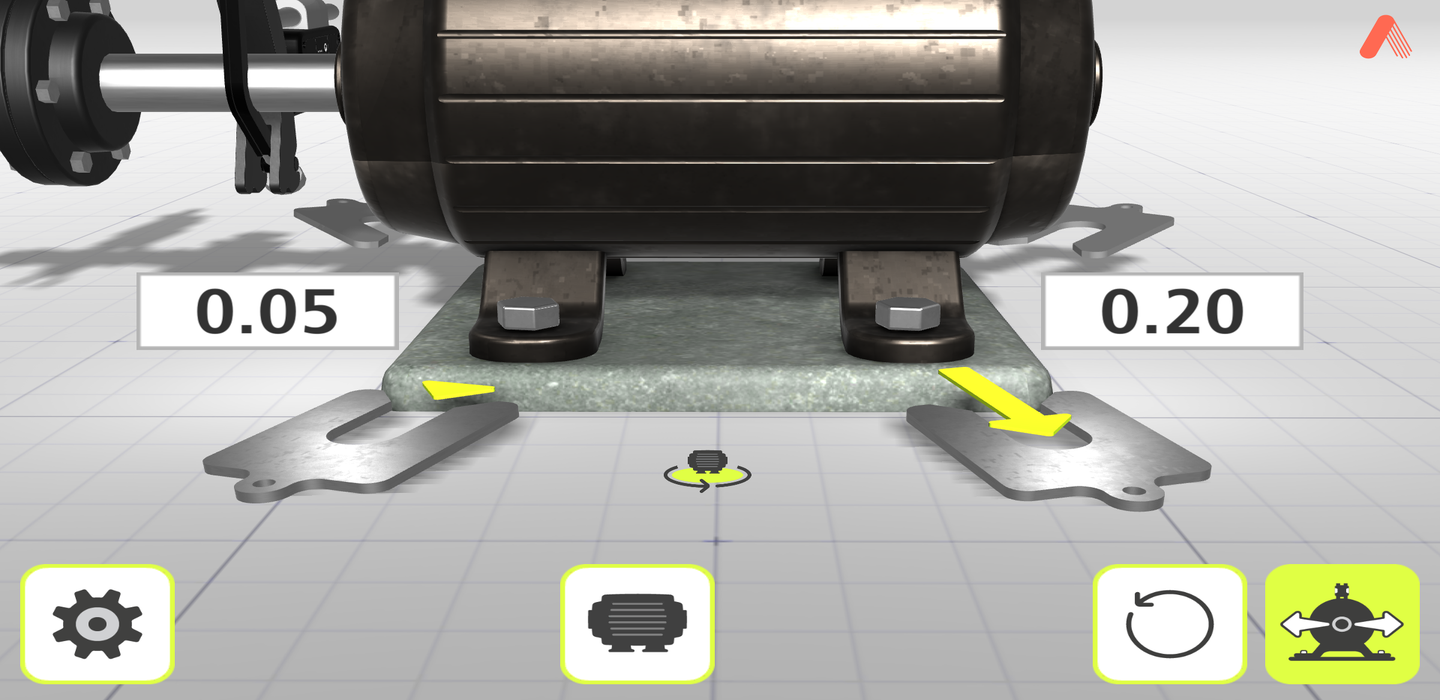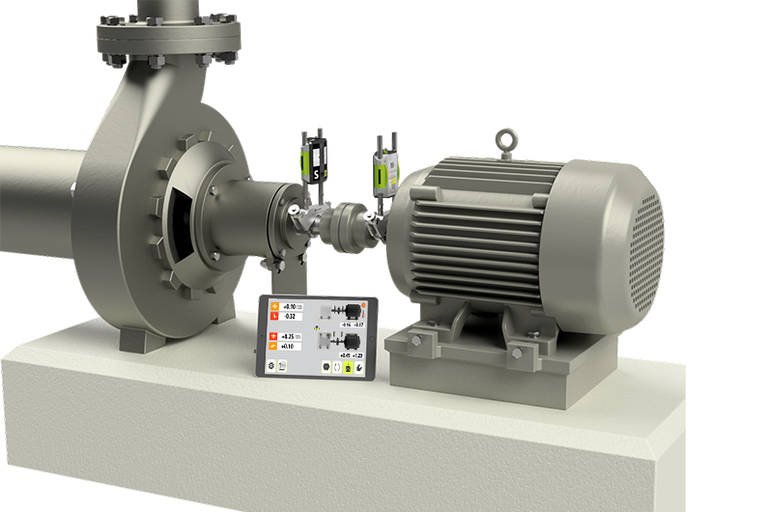The history of shaft alignment can be traced back to the early days of machinery maintenance, when the most common method for aligning shafts was the use of dial indicators. This method, while effective, was time-consuming and required a high degree of skill to perform accurately.

In the 1960s, the introduction of the optical alignment method marked a significant step forward in the history of laser shaft alignment. This method used a laser and a detector to measure the alignment of the shaft, and was considered to be more accurate and efficient than the dial indicator method.

The introduction of laser trackers in the 1990s marked a major milestone in the history of laser precision alignment. These highly precise instruments can measure the position of a target with sub-micron accuracy, making them ideal for alignment applications.
The introduction of the electronic or digital protractor method, vibration analysis method and Infrared Thermography method in the 21st century, helped the process of alignment more efficient and accurate.
The introduction of laser shaft alignment revolutionized the industry by providing an increase in accuracy that was unprecedented in comparison to traditional techniques. Years ago, laser systems were considered cutting-edge technology, but now they are an essential part of the business. This may lead one to believe that all laser measuring instruments are the same and that there is nothing else to develop in this particular field. However, this perception is incorrect. While some systems have stayed the same, others have gone through improvements.

As technology has continued to advance, so too has the precision and efficiency of laser shaft alignment methods. This has led to improved performance and longer equipment life for a wide range of machinery and equipment.
Throughout its history, laser shaft alignment has been an essential component of machinery maintenance and repair. As technology continues to evolve, it is likely that new and even more accurate methods of alignment will be developed, further improving the performance and longevity of machinery and equipment.
Revolutionizing Maintenance with Acoem Technologies for Laser Shaft Alignment
Acoem is always considered as a pioneer and have led development of the world’s first shaft alignment tool with integrated software that calculated measurement values with visible red laser and additional functionality.
Technological advancements have revolutionised the industry and businesses in the past few years, thus influencing the production process and supply chain. Industry 4.0 has integrated new technologies, for instance, cloud computing, AI, analytics and machine learning, into operations and production processes, unveiling a new generation of smart techniques. Acoem has always been at the forefront of technological innovation and understands your need to take control of your machinery and proactively identify maintenance requirements so you can make smarter, more confident decisions.
Accessibility, connectivity and ease of use are key areas we focus on to continually improve your user experience. Few of our technology innovations are

Alignment Intelligence: Exceptional measurement accuracy
Acoem’s advanced laser sensors utilize cutting-edge digital CCD technology, providing exceptional digital filtering capabilities and making the sensors highly resistant to external factors that can have a negative impact, such as vibration and ambient light. This technology ensures that the sensors are able to operate with accuracy and consistency in a wide range of conditions. The digital filtering capabilities also help to reduce noise and improve signal-to-noise ratio, leading to more accurate and reliable measurement data. The inbuilt intelligence sets them apart from other sensors, making them a preferred choice for many applications.

VertiZontal Moves : Measure Once, Move in Two Directions
If the machine is misaligned, you will be recommended to go to a shims result view. The technology easily calculates how much you need to remove or add shims in order to correct the machine vertically. When moving on to horizontal correction, the system goes live and will deliver real time values during the adjustment phase. No re-measurements in between adjustments are necessary, as you are never in doubt of the machine’s true position.
It saves a great deal of time by avoiding unnecessary multiple moves for other sensors. In the shortest possible time, the final precision alignment is achieved within tolerance.

TrueLive: An industry-first technology
TrueLive™ functionality ensures that you always know your machine’s exact position. Its two compact smart sensors feature digital detectors and inclinometers which monitor both shaft positions simultaneously. Even if you move the machine’s position out of detector range or interrupt the laser beam, the smart sensors will resume with an updated machine position and always deliver live values, saving you considerable time when aligning your machinery.

GuideU : our graphical user interface, your alignment guide
Our patented icon- and app-based, and color-coded user interface, GuideU, makes it easy to measure, align, and document each job. In order to minimize the risk of operator errors, we developed an adaptive user interface. It guides the user throughout the job in logical and easy-to-follow steps. It will deliver measurement and correction values based on what the system finds during the alignment process.
This eliminates confusion for less-experienced users and provides ease of access throughout the activity. To add to the enhanced user experience, we have given the interface a game-like 3D graphic look.
Our icon-driven, language-free alignment systems produce measurement reports which can easily be understood by all users, regardless of their language.

OmniView
Experience seamless shaft alignment from any angle with ACOEM’s OmniView function. The display unit presents the machine as if it were in front of you, displaying a graphical user interface with icons and symbols, eliminating the need for text-based instructions. The display screen and built-in gyroscope option make it easy to keep track of both the machine and user during the alignment process. With the adaptive user interface guiding you through the measurement and alignment process, the OmniView function revolutionizes the shaft alignment experience.
Grow your maintenance capabilities
Acoem offers a first truly flexible and scalable solution combining different technologies on the same platform to deliver reliable and precise proactive and predictive maintenance for industrial machinery. As new technologies become available or as your specific needs change, constantly add tools or upgrade your system.
In addition to the Horizontal and Vertical shaft alignment apps, the Our ecosystem currently features:
- The Pre-alignment app, designed to remove the complexity of your laser alignment process, making it faster and more reliable (works with the Acoem wireless Run-out probe)
- The Bearing Defender app, which provides quick first-level information on bearing health based on vibration readings in a matter of seconds (works with an Acoem wireless vibration sensor)
- The Machine Defender app, which provides full rotating machinery with AI-powered vibration diagnostics instantly in the field (works with an Acoem wireless vibration sensor)

Connect with Acoem
Get more information about vibration monitoring and how it can help you achieve plant reliability. Find out more about our comprehensive solutions, services, and training programs.











